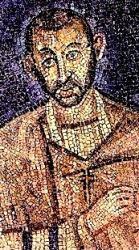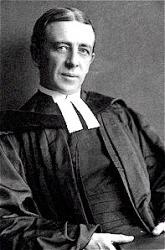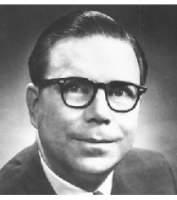Planning worship?
Check out our sister site, ZeteoSearch.org,
for 20+ additional resources related to your search.
- |
User Links
Person Results
Ronald F. Krisman
Person Name: Ronald F. Krisman, b. 1946 Scripture: Luke 2:6-18 Translator of "Infant Holy, Infant Lowly (Niño Santo, Niño Manso)" in Oramos Cantando = We Pray In Song
Ronald F. Krisman
J. Troutbeck
1832 - 1899 Person Name: John Troutbeck Scripture: Luke 2:8-14 Translator (stanza 1) of "Break Forth, O Beauteous Heavenly Light" in The United Methodist Hymnal Troutbeck, John, D.D., son. of George Troutbeck, of Dacre, Cumberland, b. Nov. 12, 1832, and educated at Rugby and Univ. College, Oxford, B.A. 1856, M.A. 1858, and D.D. by Abp. of Cant. 1883. Ordained in 1855. He held several appointments, the most important being Chaplain and Priest in Ordinary to the Queen, Minor Canon of Westminster, 1869, and Sec. to the N. Test. Revision Company, 1870-1881. He died Oct. 11, 1899. He made a few translations from the German, but is best known through his Manchester Psalter and Chant Book, 1867, and his Catholic Paragraph Psalter, 1894. He also compiled the Westminster Abbey Hymn Book, 1883.
--John Julian, Dictionary of Hymnology, New Supplement (1907)
J. Troutbeck
St. Ambrose

340 - 397 Person Name: Ambrose of Milan Scripture: Luke 2:8-14 Author (attr.) of "Savior of the Nations, Come" in The Presbyterian Hymnal Ambrose (b. Treves, Germany, 340; d. Milan, Italy, 397), one of the great Latin church fathers, is remembered best for his preaching, his struggle against the Arian heresy, and his introduction of metrical and antiphonal singing into the Western church. Ambrose was trained in legal studies and distinguished himself in a civic career, becoming a consul in Northern Italy. When the bishop of Milan, an Arian, died in 374, the people demanded that Ambrose, who was not ordained or even baptized, become the bishop. He was promptly baptized and ordained, and he remained bishop of Milan until his death. Ambrose successfully resisted the Arian heresy and the attempts of the Roman emperors to dominate the church. His most famous convert and disciple was Augustine. Of the many hymns sometimes attributed to Ambrose, only a handful are thought to be authentic. Bert Polman =====================
Ambrosius (St. Ambrose), second son and third child of Ambrosius, Prefect of the Gauls, was born at Lyons, Aries, or Treves--probably the last--in 340 A.D. On the death of his father in 353 his mother removed to Rome with her three children. Ambrose went through the usual course of education, attaining considerable proficiency in Greek; and then entered the profession which his elder brother Satyrus had chosen, that of the law. In this he so distinguished himself that, after practising in the court of Probus, the Praetorian Prefect of Italy, he was, in 374, appointed Consular of Liguria and Aemilia. This office necessitated his residence in Milan. Not many months after, Auxentius, bishop of Milan, who had joined the Arian party, died; and much was felt to depend upon the person appointed as his successor. The church in which the election was held was so filled with excited people that the Consular found it necessary to take steps fur preserving the peace, and himself exhorted them to peace and order: when a voice suddenly exclaimed, "Ambrose is Bishop," and the cry was taken up on all sides. He was compelled to accept the post, though still only a catechumen; was forthwith baptized, and in a week more consecrated Bishop, Dec. 7, 374. The death of the Emperor Valentinian I., in 375, brought him into collision with Justina, Valentinian's second wife, an adherent of the Arian party: Ambrose was supported by Gratian, the elder son of Valentinian, and by Theodosius, whom Gratian in 379 associated with himself in the empire. Gratian was assassinated in 383 by a partisau of Maximus, and Ambrose was sent to treat with the usurper, a piece of diplomacy in which he was fairly successful. He found himself, however, left to carry on the contest with the Arians and the Empress almost alone. He and the faithful gallantly defended the churches which the heretics attempted to seize. Justina was foiled: and the advance of Maximus on Milan led to her flight, and eventually to her death in 388. It was in this year, or more probably the year before (387), that Ambrose received into the Church by baptism his great scholar Augustine, once a Manichaean heretic. Theodosius was now virtually head of the Roman empire, his colleague Valentinian II., Justina's son, being a youth of only 17. In the early part of 390 the news of a riot at Thessalonica, brought to him at Milan, caused him to give a hasty order for a general massacre at that city, and his command was but too faithfully obeyed. On his presenting himself a few days after at the door of the principal church in Milan, he was met by Ambrose, who refused him entrance till he should have done penance for his crime. It was not till Christmas, eight months after, that the Emperor declared his penitence, and was received into communion again by the Bishop. Valentinian was murdered by Arbogastes, a Frank general, in 392; and the murderer and his puppet emperor Eugenius were defeated by Theodosius in 394. But the fatigues of the campaign told on the Emperor, and he died the following year. Ambrose preached his funeral sermon, as he had done that of Valentinian. The loss of these two friends and supporters was a severe blow to Ambrose; two unquiet years passed, and then, worn with labours and anxieties, he himself rested from his labours on Easter Eve, 397. It was the 4th of April, and on that day the great Bishop of Milan is remembered by the Western Church, but Rome commemorates his consecration only, Dec. 7th. Great he was indeed, as a scholar, an organiser, a statesman; still greater as a theologian, the earnest and brilliant defender of the Catholic faith against the Arians of the West, just as Athanasius (whose name, one cannot but remark, is the same as his in meaning) was its champion against those of the East. We are now mainly concerned with him as musician and poet, "the father of Church song" as he is called by Grimm. He introduced from the East the practice of antiphonal chanting, and began the task, which St. Gregory completed, of systematizing the music of the Church. As a writer of sacred poetry he is remarkable for depth and severity. He does not warm with his subject, like Adam of St. Victor, or St. Bernard. "We feel," says Abp. Trench, "as though there were a certain coldness in his hymns, an aloofness of the author from his subject. "A large number of hymns has been attributed to his pen; Daniel gives no fewer than 92 called Ambrosian. Of these the great majority (including one on himself) cannot possibly be his; there is more or less doubt about the rest. The authorities on the subject are the Benedictine ed. of his works, the Psalterium, or Hymnary, of Cardinal Thomasius, and the Thesaurus Hymnologicus of Daniel. The Benedictine editors give 12 hymns as assignable to him, as follows:—1. Aeterna Christi munera. 2. Aeterne rerum Conditor. 3. Consors Paterni luminii. 4. Deus Creator omnium. 5. Fit porta Christi pervia, 6. Illuminans Altissimus. 7. Jam surgit hora tertia. 8. 0 Lux Beata Trinitas. 9. Orabo mente Dominum. 10. Somno refectis artubus. 11. Splendor Paternae gloriae. 12. Veni Redemptor gentium. Histories of these hymns, together with details of translations into English, are given in this work, and may be found under their respective first lines. The Bollandists and Daniel are inclined to attribute to St. Ambrose a hymn, Grates tibi Jesu novas, on the finding of the relics of SS. Gervasius and Protasius. These, we know, were discovered by him in 386, and it is by no means unlikely that the bishop should have commemorated in verse an event which he announces by letter to his sister Marcellina with so much satisfaction, not to say exultation.A beautiful tradition makes the Te Deum laudamus to have been composed under inspiration, and recited alternately, by SS. Ambrose and Augustine immediately after the baptism of the latter in 387. But the story rests upon a passage which there is every reason to consider spurious, in the Chronicon of Dacius, Bishop of Milan in 550. There is no hint of such an occurrence in the Confessions of St. Augustine, nor in Paulinue's life of St. Ambrose, nor in any authentic writing of St. Ambrose himself. The hymn is essentially a compilation, and there is much reason to believe, with Merati, that it originated in the 5th century, in the monastery of St. Honoratus at Lerins. [Te Deum.] -- John Julian, Dictionary of Hymnology (1907)
Also known as: Ambrotio, Ambrosio de Milán Ambrosius Mediolanensis Ambrosius Saint, Bp. of Milan Ambrosius von Mailand Aurelio Ambrogio, Saint, Bishop of Milan Aurelius Ambrosius, Saint, Bishop of Milan Milan, d. 397
St. Ambrose
Carlton R. Young

b. 1926 Scripture: Luke 2:7 Harmonizer of "ORIENTIS PARTIBUS" in The United Methodist Hymnal
Carlton R. Young
Graham Maule
1958 - 2019 Person Name: Graham Maule (b. 1958) Scripture: Luke 2:1-16 Author of "Who would think that what was needed" in Church Hymnary (4th ed.)
Graham Maule
Shirley Erena Murray
1931 - 2020 Person Name: Shirley Erena Murray, 1931- Scripture: Luke 2:8-20 Author of "No Obvious Angels" in Worship and Rejoice Shirley Erena Murray (b. Invercargill, New Zealand, 1931) studied music as an undergraduate but received a master’s degree (with honors) in classics and French from Otago University. Her upbringing was Methodist, but she became a Presbyterian when she married the Reverend John Stewart Murray, who was a moderator of the Presbyterian Church of New Zealand. Shirley began her career as a teacher of languages, but she became more active in Amnesty International, and for eight years she served the Labor Party Research Unit of Parliament. Her involvement in these organizations has enriched her writing of hymns, which address human rights, women’s concerns, justice, peace, the integrity of creation, and the unity of the church. Many of her hymns have been performed in CCA and WCC assemblies. In recognition for her service as a writer of hymns, the New Zealand government honored her as a Member of the New Zealand Order of Merit on the Queen’s birthday on 3 June 2001. Through Hope Publishing House, Murray has published three collections of her hymns: In Every Corner Sing (eighty-four hymns, 1992), Everyday in Your Spirit (forty-one hymns, 1996), and Faith Makes the Song (fifty hymns, 2002). The New Zealand Hymnbook Trust, for which she worked for a long time, has also published many of her texts (cf. back cover, Faith Makes the Song). In 2009, Otaga University conferred on her an honorary doctorate in literature for her contribution to the art of hymn writing.
I-to Loh, Hymnal Companion to “Sound the Bamboo”: Asian Hymns in Their Cultural and Liturgical Context, p. 468, ©2011 GIA Publications, Inc., Chicago
Shirley Erena Murray
Johann Georg Ebeling

1637 - 1676 Scripture: Luke 2:8-20 Composer of "WARUM SOLLT' ICH" in The Presbyterian Hymnal Johann George Ebeling Germany 1637-1676. Born at Luneburg, Germany, he studied theology at the University of Helmstedt. He was a composer, author, editor, and collector of music. In 1660 he became head of the Hamburg Collegium, and in 1662 cantor of St. Nicholas Church in Berlin. In 1667 he begam teaching music and Greek in Stettin. He wrote choruses, chorales, cantatas, instrumentals oratorios, requiems and music for over 100 lyrics of Paul Gerhardt. He also wrote about music history. 278 works. He died in Stettin.
John Perry
Johann Georg Ebeling
Louis F. Benson

1855 - 1930 Person Name: Louis FitzGerald Benson Scripture: Luke 2:8-15 Author of "O Sing a Song of Bethlehem" in The Presbyterian Hymnal Benson, Louis FitzGerald, D.D., was born at Philadelphia, Penn., July 22, 1855, and educated at the University of Penn. He was admitted to the Bar in 1877, and practised until 1884. After a course of theological studies he was ordained by the Presbytery of Philadelphia North, in 1888. His pastorate of the Church of the Redeemer, Germantown, Phila., extended from his ordination in 1888 to 1894, when he resigned and devoted himself to literary and Church work at Philadelphia. He edited the series of Hymnals authorised for use by the General Assembly of the Presbyterian Church in the U.S.A., as follows:—
(1) The Hymnal, Phila., 1895; (2) The Chapel Hymnal, 1898; and (3) The School Hymnal, 1899.
Dr. Benson's hymnological writings are somewhat extensive. They include:—
(1) Hymns and Verses (original and translations), 1897; (2) The Best Church Hymns, 1898; (3) The Best Hymns, 1898; (4) Studies of Familiar Hymns, 1903, &c.
Of his original hymns the following have come into American common use:—
I. In The Hymnal, 1895:—
1. O Christ, Who didst our tasks fulfil. For Schools and Colleges. Written in 1894.
2. O risen Christ, Who from Thy throne. For Installation of a Pastor. Written in 1894.
II. In The School Hymnal, 1899:—
3. A glory lit the wintry sky. Loneliness of Jesus. Written in 1897.
4. Happy town of Salem. Heaven.
5. Now the wintry days are o'er. Easter.
6. O sing a song of Bethlehem. Early Life of Jesus.
7. Open the door to the Saviour. Invitation.
8. Out of the skies, like angel eyes. Lullaby.
9. Who will teach me how to pray? Prayer. In Carey Bonner's Sunday School Hymnary, 1905:—
10. The sun is on the land and sea. Morning.
11. Our wilful hearts have gone astray. Penitence.
12. When I awake from slumber. Morning.
Of the above, Nos. 1-4, 10-12 are from Hymns and Verses, 1897. In the above collection by C. Bonner, Nos. 1, 4, and 6 are also found. Of Dr. Benson's translations from the Latin one only is in common use. See "Plaudite coeli, Rideat aether."
As a hymn writer Dr. Benson is not widely known, mainly through the recent publication of his verse. His hymns deserve attention, and will, no doubt, gain the public ear in due time; whilst his hymnological researches and publications are thorough and praiseworthy.
--John Julian, Dictionary of Hymnology, New Supplement (1907)
Louis F. Benson
Hugo Jüngst

1853 - 1923 Scripture: Luke 2:8-12 Arranger of "JUNGST" in Trinity Hymnal (Rev. ed.) Hugo Richard Jungst Germany 1853-1923. Born at Dresden, Germany, he came from an affluent, middle-class merchant family, his father owning a factory and warehouse for French millstones. He received early piano lessons at age seven, and entered the Royal Conservatory of Music in Dresden for a six-year program of study, specializing in piano and composition. He studied with famous names of the time. In 1876 he founded the Dresden Mannergesangverein (men’s choir), which he headed until 1903. He was appointed Koniglichen (royal music director), and in 1898 royal professoir of music. He was an author, composer, and arranger known for carols, anthems, and music scores. He received several rewards in his lifetime, and perfomed internationally in Europe and America. He died in Dresden
John Perry
Hugo Jüngst
Walter Ehret

1918 - 2009 Person Name: Walter Ehret, 1918-2009 Scripture: Luke 2:13-14 Translator of "De tierra lejana venimos (From a Distant Land)" in Santo, Santo, Santo EHRET--Walter, passed away on November 16th, 2009 at the age of 91, after a long, happy, and productive life. He left a great legacy as a teacher who touched many students' lives. He was the beloved husband and best friend of Beverly, his wife of 62 years, adored father of David Ehret and Christine Marver, and daughter-in-law Pamela Ehret, and the proud grandfather of Jeffrey, Julia, and Sarah Marver. Mr. Ehret was born in New York City in 1918 to Adele Tonies and her husband who tragically died in the flu epidemic of that year. He was later adopted by a kind stepfather, Charles Ehret. Walter Ehret was a graduate of the Julliard School of Music and Teachers College, Columbia University. He has served as an adjunct faculty member of Hofstra University, Manhattanville College, and Teachers College, Columbia University. In addition, he taught instrumental and choral music in several New Jersey and New York school systems for over 40 years. In 1984 he retired as District Coordinator of Music for the Scarsdale, NY Public Schools. Choral groups under his direction have performed with distinction at contests and at other award-winning occasions. They have performed in Carnegie Hall and Madison Square Garden, as well as on radio and television. His organizations have been invited to sing at New Jersey and New York State School Music Association conventions, divisional meetings of the Music Educators National Conference, and the first American Choral Directors Association National Conference. He was a past president of the Music Educators Associations for Bergen, Nassau, and Westchester Counties. He was a former Vice President of Choirs for the New York State School Music Association, a former State Chairman of Junior High School Music of the New York State School Music Association, and a past member of several MENC committees. He was a founding member and first New York State president of the American Choral Directors Association. He is well known as a clinician, conductor, and choral literature specialist, and has functioned in these various capacities at over 300 workshops in some 30 states. He is one of the nation's most prolific and respected choral editors and arrangers, and has over 2000 publications in print. In addition, he is co-author of Growing with Music, a basic music series for grades K-8, co-author of Functional Lessons in Singing, a class voice textbook, author of The Choral Conductor's Handbook, and co-author of The International Book of Christmas Carols.
--www.legacy.com/obituaries/nytimes/
Walter Ehret


 My Starred Hymns
My Starred Hymns


